Kathmandu Durbar Square is a humble abode for domestic and international travelers to appreciate Nepal's architectural and cultural foundation. The landmark is a UNESCO world heritage site that acknowledges Nepal's long history and aesthetic characteristics. Locally the durbar square is addressed as Hanuman Dhoka or Basantapur. The palace is a masterpiece of medieval period architecture. In Nepali, Kathmandu Durbar Square is written as: काठमाडौं दरबार क्षेत्र | Additionally, if referring specifically to the Hanuman Dhoka Palace within Durbar Square, it is written as: हनुमानढोका दरबार.
Durbar square was built with the hard work and talent of the local craftsmen and builders using then local technology and local materials. Moreover, the unique layout, composition, and decoration of the Kathmandu Durbar Square represent its architectural aesthetics and philosophy, have a particular character, and radiate attractive artistic charm.
Everything regarding the Durbar Square describes the religious architecture, realizing the religious doctrine of harmony. It is a beautiful creation of medieval Nepal. Therefore, it is one of the best attractions of the city. Henceforth, we shed light on the seven best highlights of Kathmandu Durbar Square in this blog for interested travelers.
Read through the blog and see what to look forward to on their visit to the cultural site.
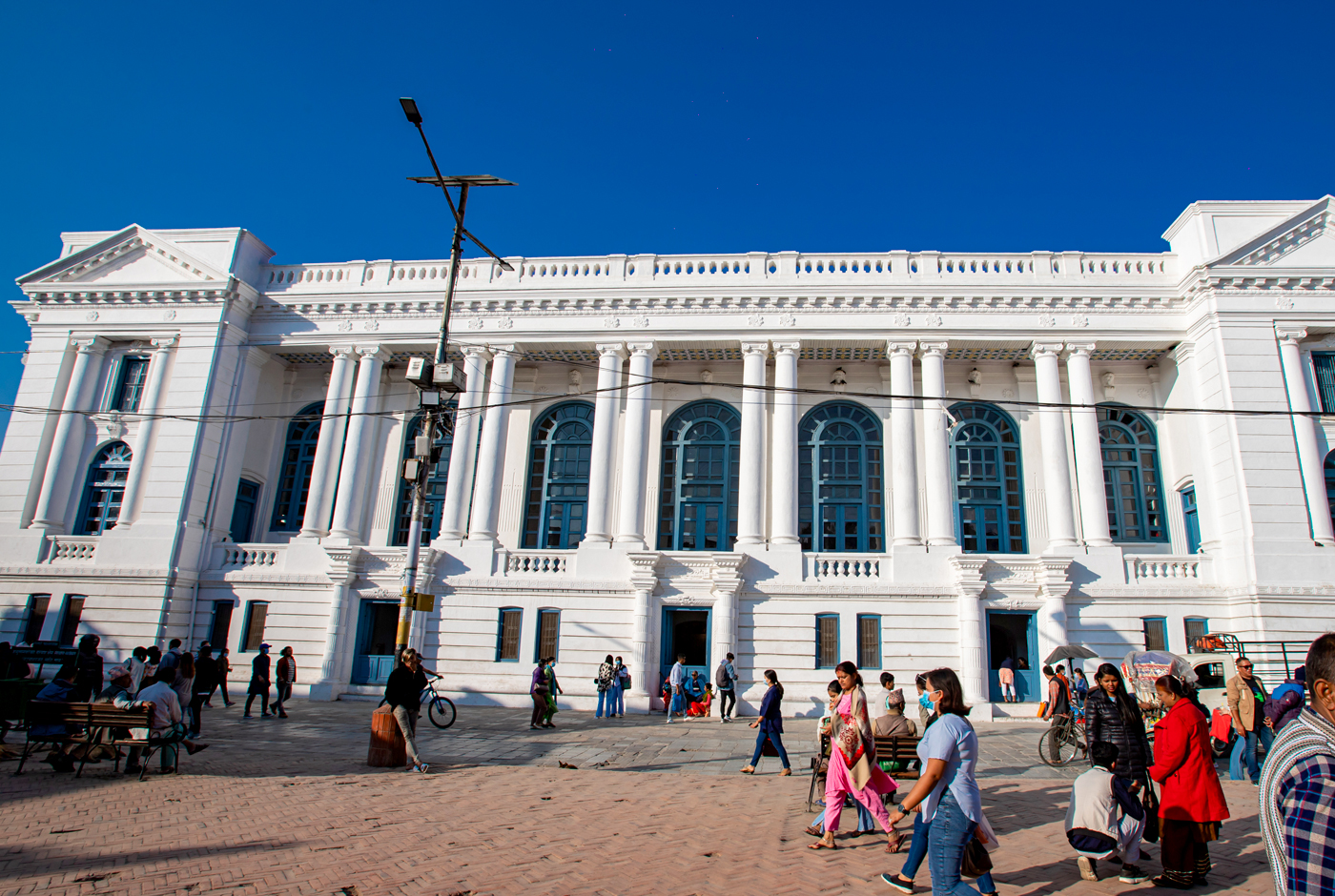
Why is kathmandu Durbar Square Famous for?
Hanuman Dhoka Durbar
Hanuman Dhoka Durbar is a complex of royal palaces, quadrangles, towers, temples, monuments, and other sites of the Malla and the Shah Dynasty rulers of Kathmandu, Nepal. Dhokha means door, and Durbar translates as the palace. The palace is the center of Kathmandu valley's cultural and historical core. Hanumandhoka Durbar gets its name from the stone image of "Hanuman" (a Hindu deity), whom the Malla and the Shah rulers believed protected them from their evils and enemies.
Giant statues of Hanuman are located near the palace's main entrance gate. Pratap Malla, in 1672, installed the figure of the deity at the entrance of the Durbar. Now, the palace is a museum under the attention of the government of Nepal. Inside the palace, visitors can observe the Malla and Shah Dynasty's long history and visit numerous chowks (courtyards) surrounding the palace. Some of the notable chowks inside the palace are Mohan Chowk, Nasal Chowk, Sundar Chowk, and Mul Chowk. These chowks boast medieval art's finest works utilizing all media ranging from metal, stone, and wood to paintings alike.
Kasthamandap
Kasthamandap is a three-storied public shelter that included a shrine consecrated to Gorakshanath situated a few minutes away from the main royal palace. Over the years, Kasthamandap underwent various upgrades, transformations, and renovations. Kasthamandap is also the most prominent structure ever constructed in the typical triple-tiered roofing style. Although it housed several shrines, Kasthamandap was primarily devoted to multiple secular functions: rest-house, council hall, social center, the marketplace, and more.
Taleji Temple
Taleju Temple of Kathmandu Durbar Square is considered the most prominent temple of the Hanumandhoka Palace premises in architectural and cultural significance. No other buildings in the valley, including the palace monuments, were allowed to be built more significantly than the temple justifies the importance of the goddess for the Malla monarchs. It has managed to create a majestic grandeur around it, especially with its rich architecture. The Taleju Bhawani temple is an annex to the Kathmandu Hanumandhoka Durbar complex. It stands on a base-mound in a vast courtyard.
Kumari Ghar
The Kumari Ghar is a three-story brick structure overlooking the south side of Durbar Square, richly adorned with gods and figures' wood-carved engravings. Kumari Ghar houses the living goddess of Kathmandu. Built in 1757, the temple is known for its magnificent carvings as well as its divine inhabitant. The courtyard of the Kumari Ghar is accessible to tourists. The entrance and the whole building, the pillars, and the windows are decorated with more captivating illustrations. Photos are permitted in the yard, but it is strictly forbidden to photograph the Kumari.
Newari Jatra in Kathmandu Durbar Square
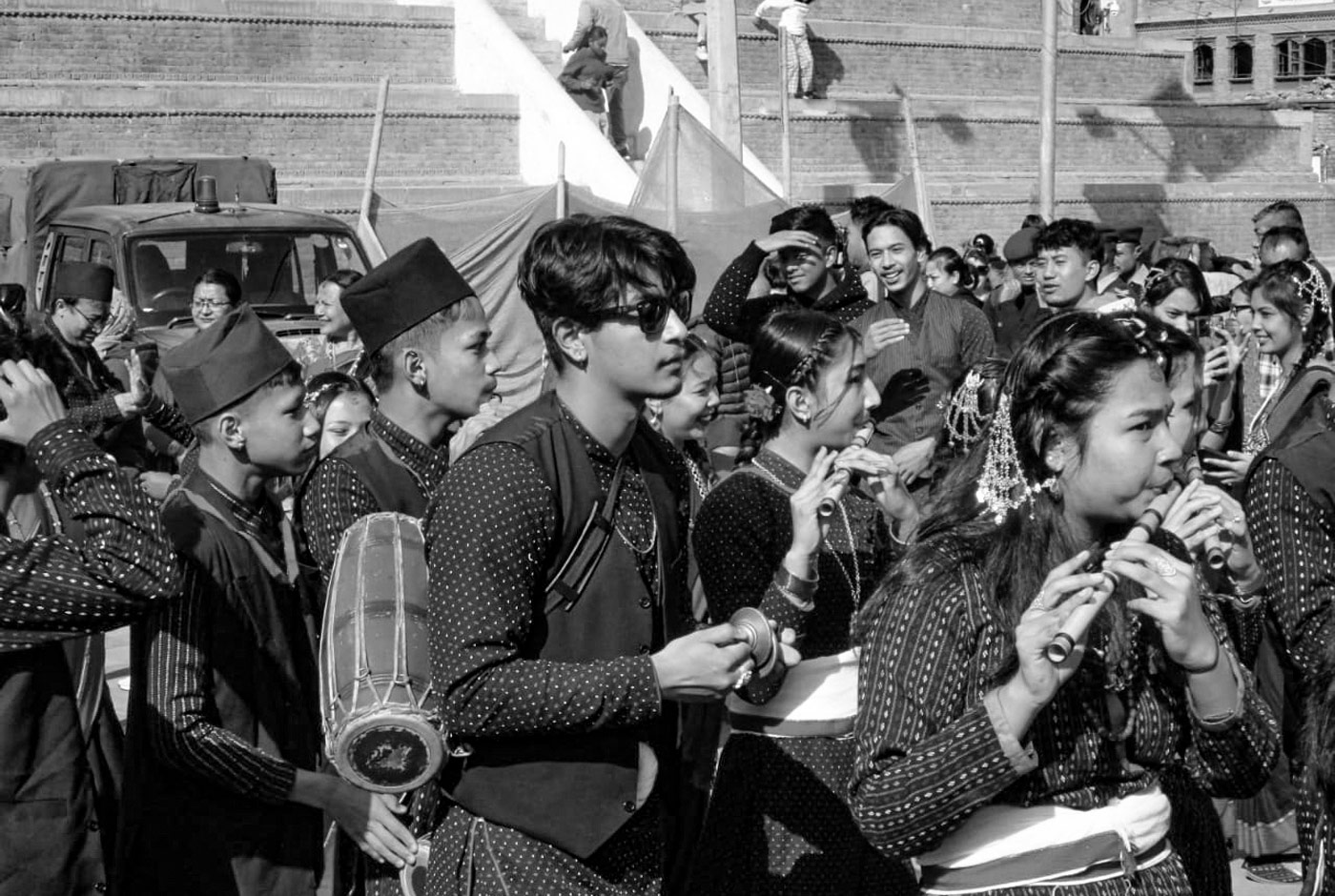
Trailokya Mohan
The Trailokya Mohan temple was built in 1680 in dedication of the Hindu deity Vishnu/Narayan. The temple is a few distances away from the Kumari Ghar. It is built on a red platform, and it is a three-story temple. In front of the temple, a giant statue of Garuda is situated. Temple adorns the carved roof struts and window screens with decoratively carved medallions.
Basantapur Tower
Located on the south side of the Nassal Chowk, the Basantapur tower is built on a rectangular plan. It has nine stories, and hence locally, it is called natural (9 floors) Durbar. The building consists of a four-tiered roof and a copper pinnacle at the top. This thirty-meter-high tower was built to create a pleasant pavilion and was named Basantapur Tower. One of the tallest buildings, a panoramic view of the city, is visible from the tower's small wooden.
Courtyards and Quadrangles
Insides the palace, there are several quadrangles and courtyards. Some notable squares are Nasal Chowk, Sundar Chowk, Lahan Chowk, Mul Chowk, and others. These courtyards boast medieval art's finest works that utilize all media ranging from metal, stone, and wood to paintings.
Things to buy in Kathmandu Durbar
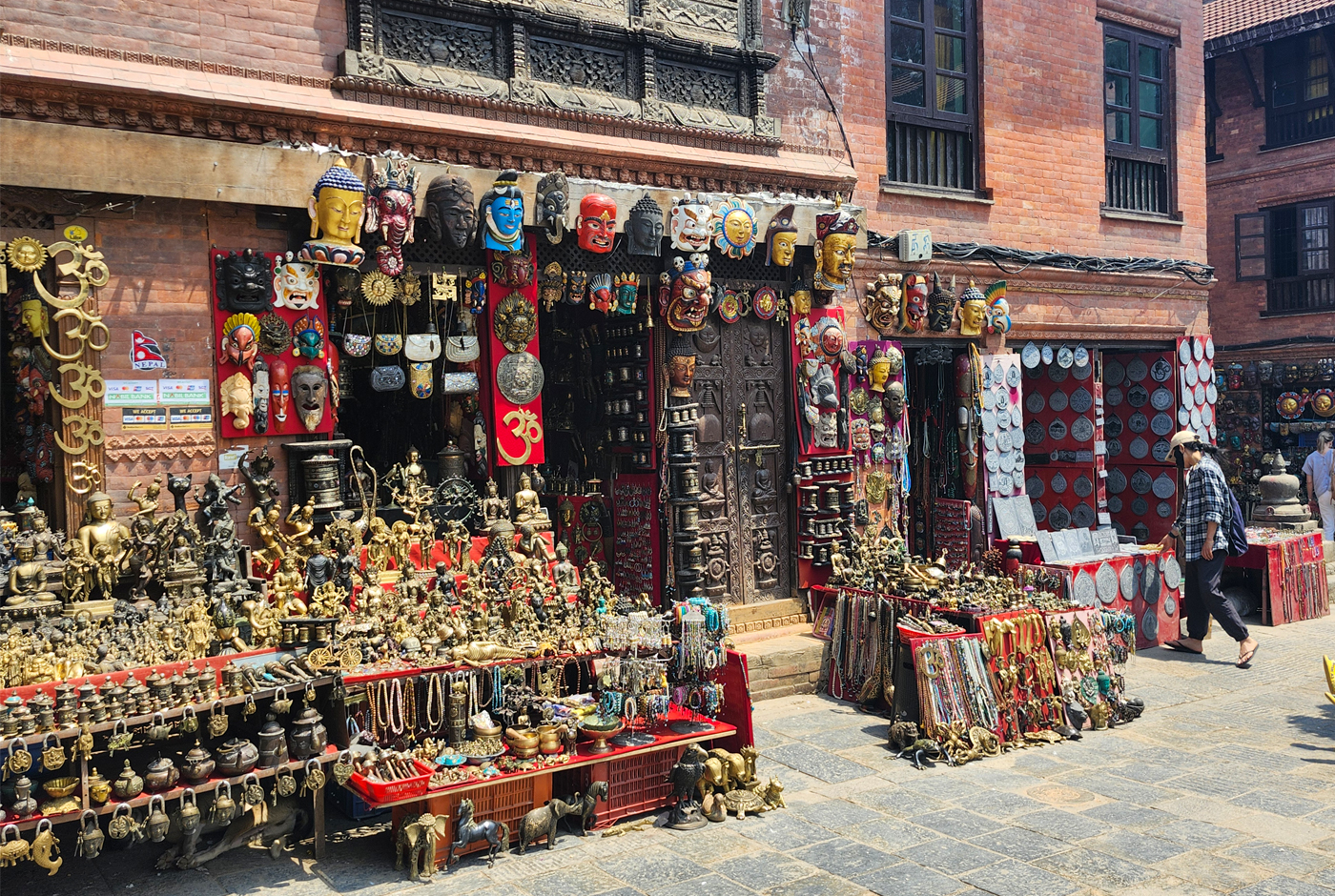
History of Kathmandu Durbar Square
Kathmandu Durbar Square—also known as Hanuman Dhoka Durbar Square or Basantapur Durbar—is more than just an architectural marvel; it's a living testament to centuries of Nepalese history, craftsmanship, and spiritual tradition. Located in the heart of the old city, this UNESCO World Heritage Site remains one of the most important cultural landmarks in the Kathmandu Valley.
Who Built the Kathmandu Durbar Square in Nepal?
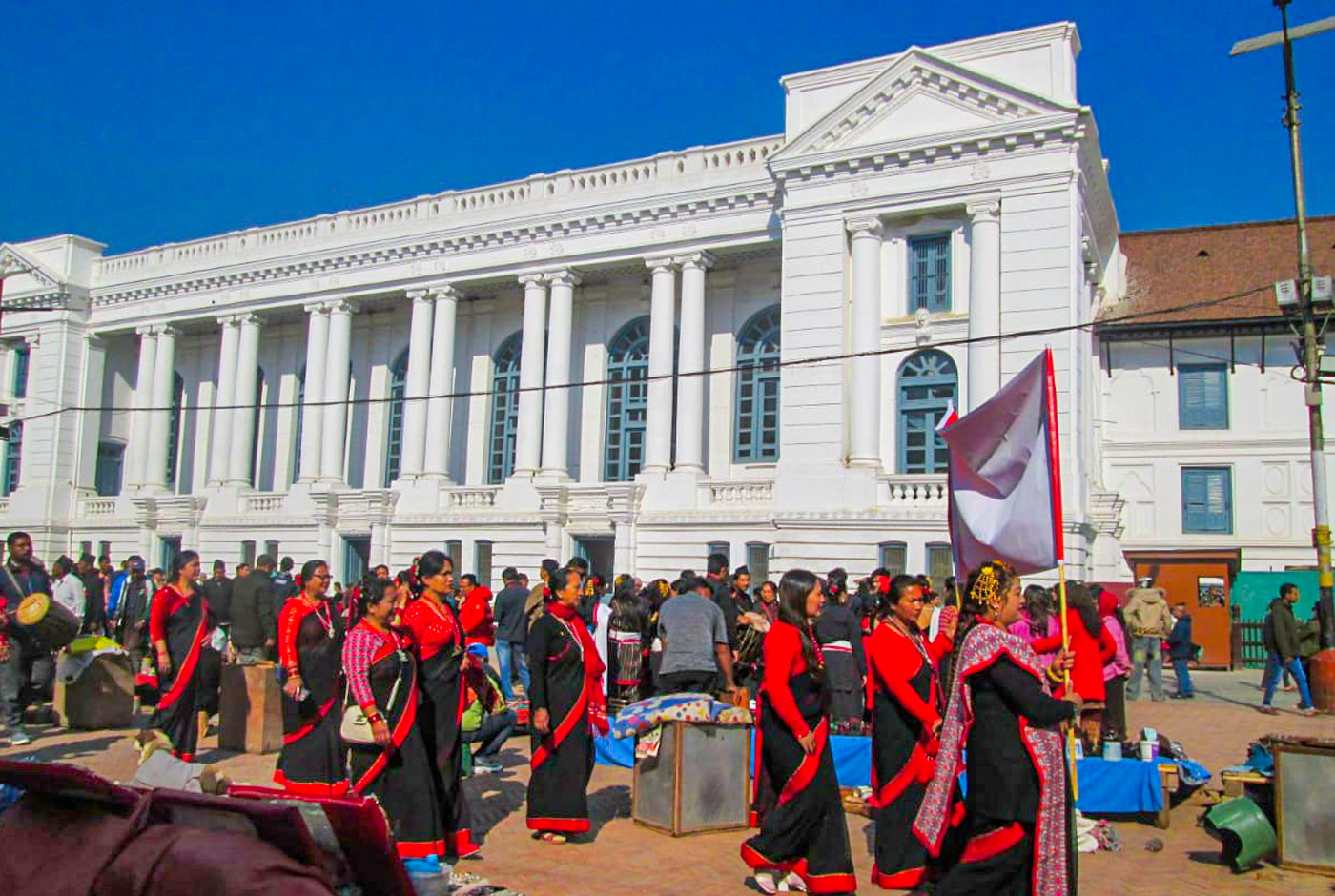
Early Foundations and Royal Legacy
The square’s origins trace back as far as the 3rd century, but it gained prominence during the Licchavi period (circa 4th to 9th century). However, its most significant developments came under the Malla dynasty (12th to 18th centuries), when Kathmandu emerged as a center of power, religion, and artistry.
The Malla kings enriched the square with temples, shrines, and palaces, creating an architectural complex that functioned both as a seat of power and a ceremonial space.
Later, the Shah dynasty continued to use the palace complex, solidifying it as a royal residence and venue for coronations well into the 19th century.
Hanuman Dhoka Palace: Heart of the Square
At the core of the square is the Hanuman Dhoka Palace Complex, named after the statue of Hanuman—the Hindu monkey god—placed at the entrance by King Pratap Malla in the 17th century. This complex once served as the royal palace of the Malla and early Shah kings.
Key features include beautiful courtyards (chowks), intricately carved wooden balconies, and sacred halls that hosted coronation ceremonies and state rituals.
Architectural and Cultural Richness
Kathmandu Durbar Square is a mosaic of architectural influences—primarily Newari, with strong elements of Indian and Tibetan styles.
Prominent landmarks within the square include:
- Taleju Temple: The tallest temple in the square, built in 1564, dedicated to the royal goddess Taleju.
- Kumari Ghar (Kumari Bahal): The residence of the Kumari, the living goddess of Kathmandu, a central figure in the city's spiritual traditions.
- Jagannath Temple: Known for its erotic carvings, this 16th-century temple is one of the oldest in the complex.
- Kasthamandap: Originally built from the wood of a single tree, this structure gave Kathmandu its name and served as a public shelter and spiritual hub.
- Each of these structures embodies fine wood carving, gilded roofs, and brickwork that reflect the ingenuity of Newar artisans.
Earthquake Damage and Restoration Efforts
The devastating 2015 Gorkha earthquake inflicted heavy damage on the square, toppling temples and cracking ancient walls.
Structures like Kasthamandap, Trailokya Mohan Temple, and several others were significantly affected.
Since then, restoration efforts led by Nepal’s Department of Archaeology, with international support (notably from China, India, and the US), have aimed to rebuild using original materials and traditional techniques.
Many temples and buildings have been successfully restored, while others remain under careful reconstruction.
UNESCO World Heritage Status
Kathmandu Durbar Square was inscribed as a UNESCO World Heritage Site in 1979—part of the collective listing of the Kathmandu Valley for its outstanding historical and cultural significance.
Its status underscores the interplay between spirituality, monarchy, and urban life that defines much of Nepal’s historical identity. The restoration work post-earthquake continues under UNESCO’s supervision, ensuring cultural authenticity is maintained.
Today’s Experience: A Glimpse into Living History
Walking through Kathmandu Durbar Square today, you’re immersed in centuries-old heritage while witnessing a city that honors the past but doesn't stand still. Locals gather in the courtyards, devotees offer prayers, and the occasional glimpse of the Kumari at her window adds an aura of living mysticism. With museums, galleries, and guided walking tours, visitors can explore the deeper narratives that have shaped Nepal's royal and religious identity.
Kathmandu Durbar Square Location
Kathmandu Durbar Square, also known as Basantapur Durbar Square or Hanuman Dhoka, is located in the heart of old Kathmandu city, in the central part of Kathmandu Valley, Nepal. It's a UNESCO World Heritage Site and a significant historical and cultural landmark. The square is easily accessible and a popular destination for tourists.
Kathmandu Durbar Square is located in the central part of the city, Kathmandu (it is not in India). It is one of the most significant historical and cultural sites in Nepal, known for its ancient palaces, temples, and courtyards.
How to reach Kathmandu Durbar Square?
The square is easily accessible by various means of transportation. If you are in Thamel, the easiest way to reach Durbar Square is by walking, which takes around 10–15 minutes. You can navigate through Tahiti to Ason, then head towards Indra Chowk, and finally reach Basantapur Durbar Square. This route offers a chance to explore the vibrant local markets and traditional Newari architecture along the way.
If you prefer a quicker option, you can take a taxi from Thamel, which takes about 5–10 minutes and costs approximately NPR 150–300, depending on traffic. Alternatively, using ride-sharing apps like Pathao or InDriver is convenient for a hassle-free ride. For budget travelers, local buses or microbuses are available from Balaju or Sorhakhutte to Sundhara (RNAC area). From there, it's just a 4–5 minute walk to Durbar Square. You can also search Kathmandu Durbar Square on Google Maps to get real-time directions
What is the entrance fee to enter Kathmandu Durbar Square?
The entrance fee to enter Kathmandu Durbar Square is Rs. 1000 per head for international visitors. And it cost Rs. 150 per ticket head for visitors to enter the museum of Kathmandu Durbar from SAARC countries.
Most of the monument of the cultural site was destroyed in the massive earthquake of 2015. The government is gradually working on rebuilding the heritage sites. Now besides a few monuments and temples, most of the rebuilding work has been completed. Therefore, travelers can still relish the ancient artworks performed on these heritage sites.
Ticket price for Kathmandu Durbar Square - 2025
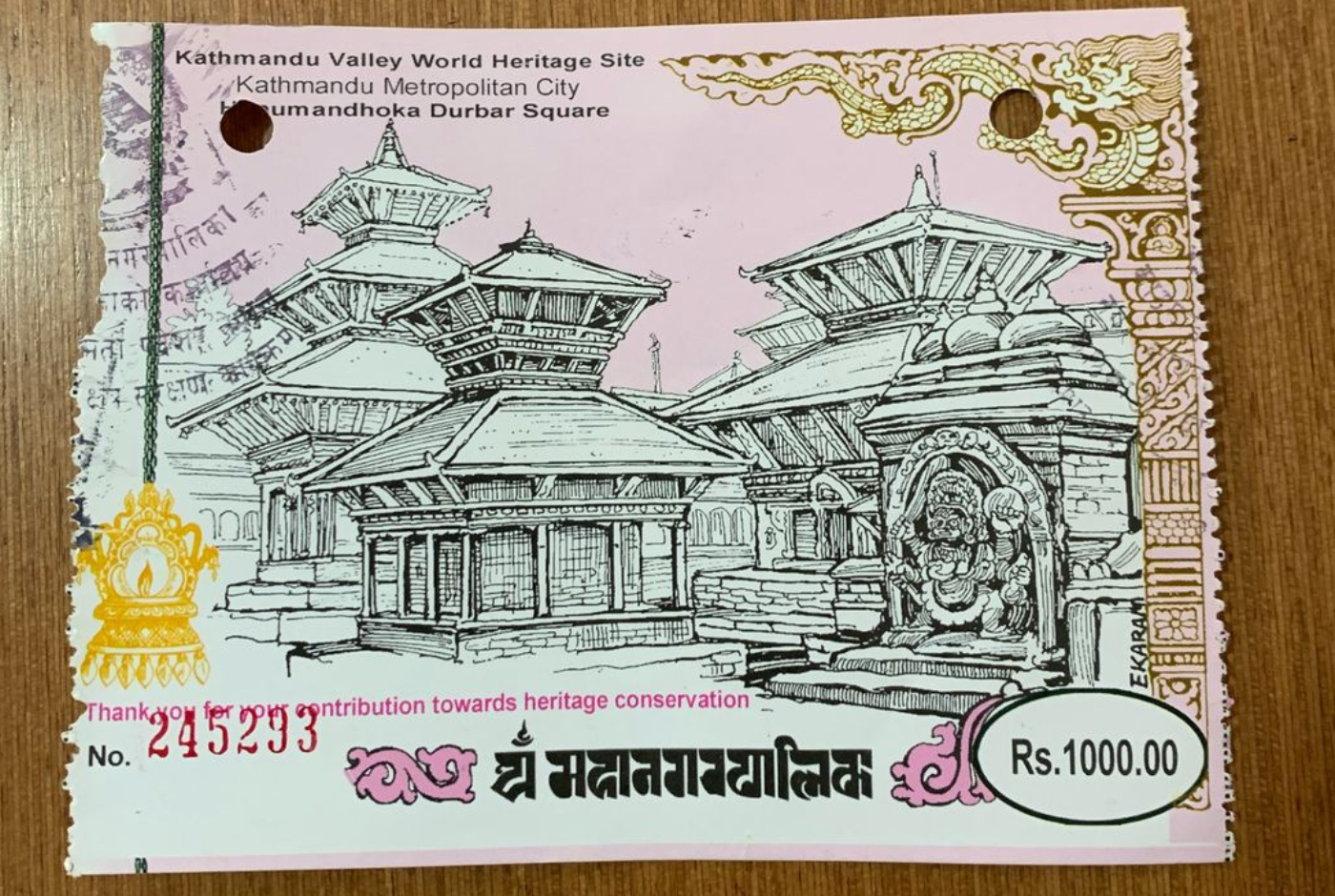
What happened to Kathmandu Durbar Square?
Kathmandu Durbar Square suffered significant damage during the 2015 earthquake, with half a dozen temples and several towers in Hanuman Dhoka palace complex collapsing. While many structures were affected, reconstruction efforts have been ongoing, and much of the square remains or has been rebuilt.
- Damage: The 2015 earthquake, with a magnitude of 7.9, caused extensive damage, including the collapse of Kasthamandap, a centuries-old wooden structure, and the Trailokya Mohan Narayan temple, the tallest in the square.
- Reconstruction: Reconstruction of Kasthamandap was completed in 2021 and reopened in 2022. Trailokya Mohan Narayan temple was also rebuilt, with reconstruction completed in early 2024.
- Ongoing Efforts: While many buildings have been restored, some, like the Shiva-Parvati Temple, are still under renovation.
- Impact on the Square: The square, a UNESCO World Heritage Site, continues to be a vibrant cultural hub and tourist destination, although the impact of the earthquake is still evident in the ongoing restoration efforts.
- Basantapur Tower: This structure, part of Hanuman Dhoka palace, was also damaged, but its exterior was reconstructed in 2023, with interior renovations ongoing.
- Gaddi Baithak: This neoclassical palace, which served as a coronation hall, was also reconstructed in 2022.
How many temples are in Kathmandu Durbar Square?
Kathmandu Durbar Square, also known as Hanuman Dhoka, houses over 50 temples. It's a UNESCO World Heritage Site and a historic palace square with numerous temples, including notable ones like Kumari Bahal and Kasthamandap.
How old is Kathmandu Durbar Square?
Kathmandu Durbar Square's origins trace back to the 3rd century when the Licchavi dynasty laid the foundation for its construction. While the square's foundational work began then, major structures within the square, like the outer complex with 16th-century temples, were added later by the Malla and Shah dynasties. The square in its current form, however, is largely from the 17th and 18th centuries, with many rebuilding efforts occurring after the 1934 earthquake.
- 3rd century: The Licchavi dynasty started constructing the square.
- 16th century: Malla kings built temples in the outer complex.
- 17th and 18th centuries: Significant additions and alterations were made, shaping the square's current layout.
- 1934: A major earthquake caused extensive damage, leading to rebuilding efforts.
- 2015: Another earthquake caused further damage, including the destruction of some 17th-century temples
What is the another name of Kathmandu Durbar Square?
Kathmandu Durbar Square is also known as Basantapur Durbar or Hanuman Dhoka. These are alternative names for the historic durbar square located in the heart of Kathmandu, Nepal.
Who built Basantapur Durbar Square?
Basantapur Durbar Square, also known as Kathmandu Durbar Square, was built during the Licchavi period (4th to 8th centuries AD). King Pratap Malla significantly expanded the property in the 17th century. The square is also home to many palaces, courtyards, and temples, including the Nautalle Durbar, a nine-story palace built by Prithvi Narayan Shah to commemorate the Unification of Nepal.
How to spend time in Kathmandu Durbar Square?
To make the most of your time at Kathmandu Durbar Square, explore the various palaces, courtyards, and temples within the area. Consider visiting Hanuman Dhoka, the home of the Living Goddess (Kumari Bahal), and the Kathmandu Museum. You can also enjoy exploring the area's history, including the buildings that were once used for royal ceremonies.
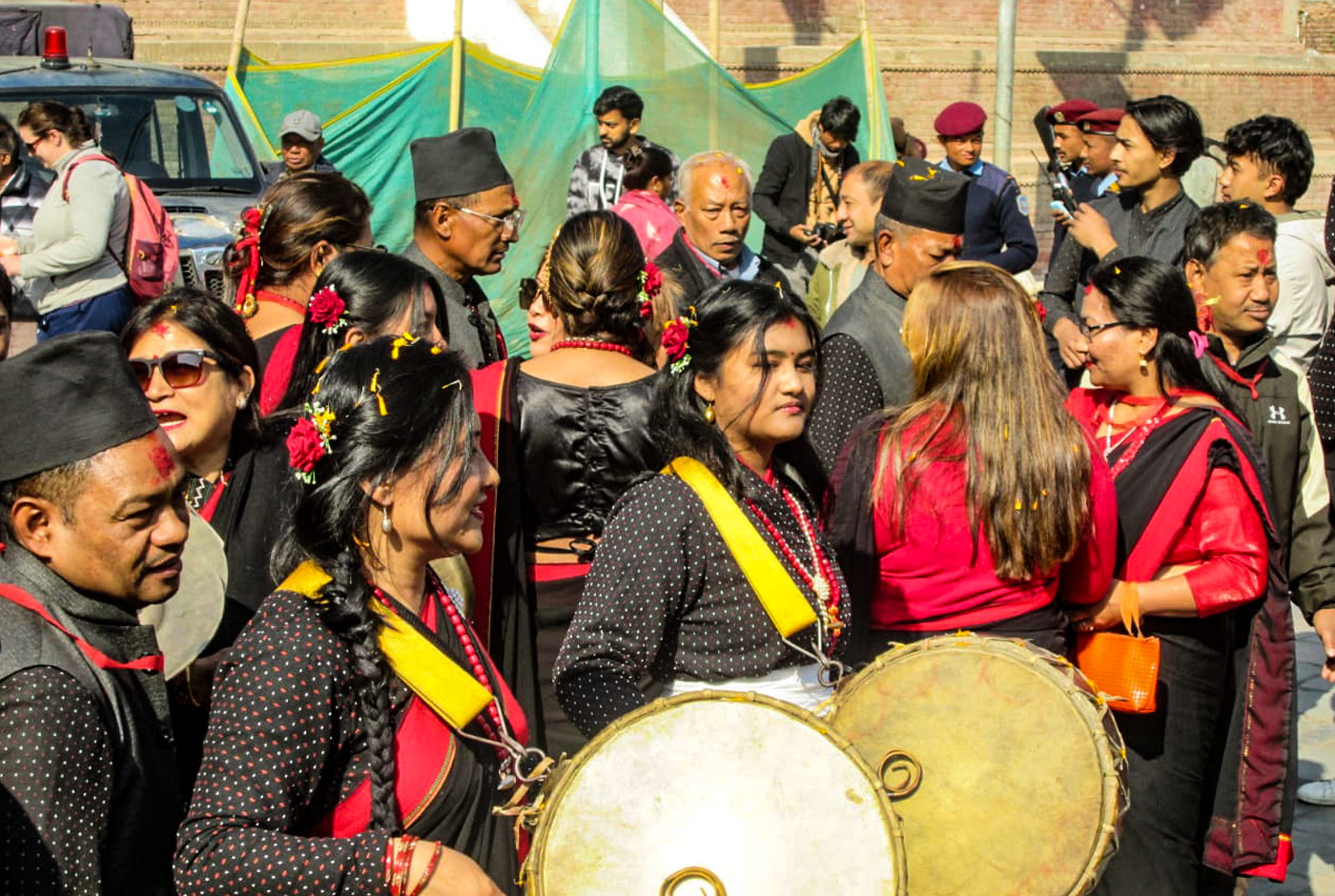
Cultural Experience:
- Explore Freak Street: A popular hangout for locals and tourists, known for its street food and live music.
- Enjoy a Meal: Many restaurants and cafes offer traditional and fusion cuisine.
- Bargain at the Market: Visit the street vendors selling trinkets, singing bowls, and other souvenirs.
- Festival time: If you are traveling to Nepal during the month of March, you can enjoy the Holi festival in Kathmandu. Witness traditional Nepalese Holi celebrations, including cultural performances, dances, and the symbolic burning of Holika, which represents the victory of good over evil.
Consider a guided tour to learn more about the history and significance of the square and its various attractions.



Post a Comment